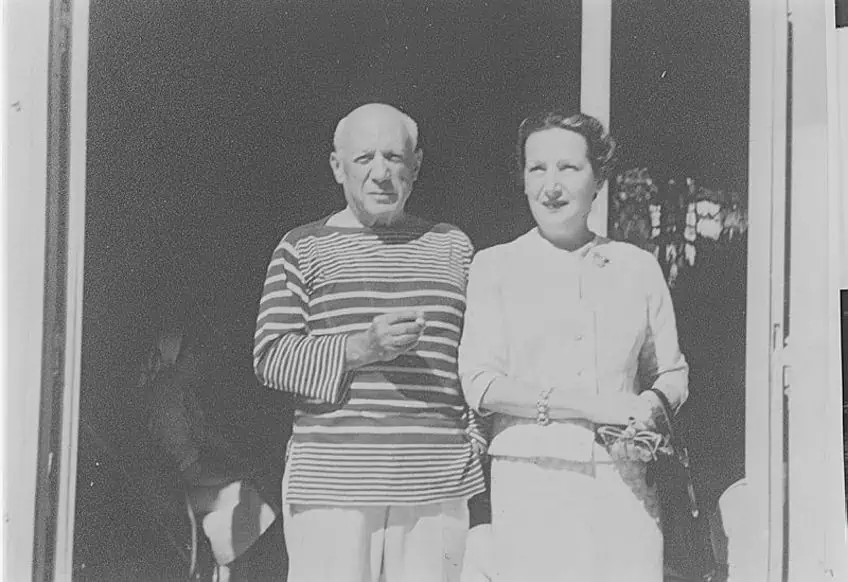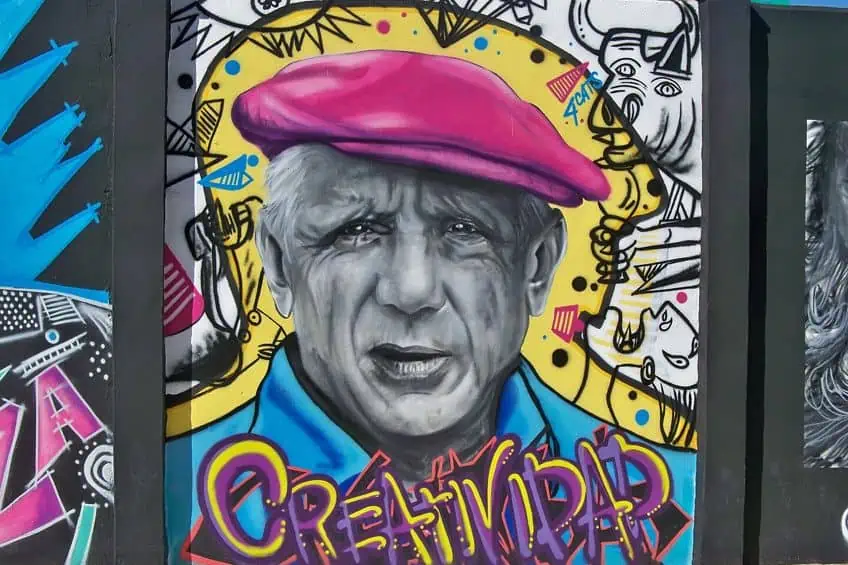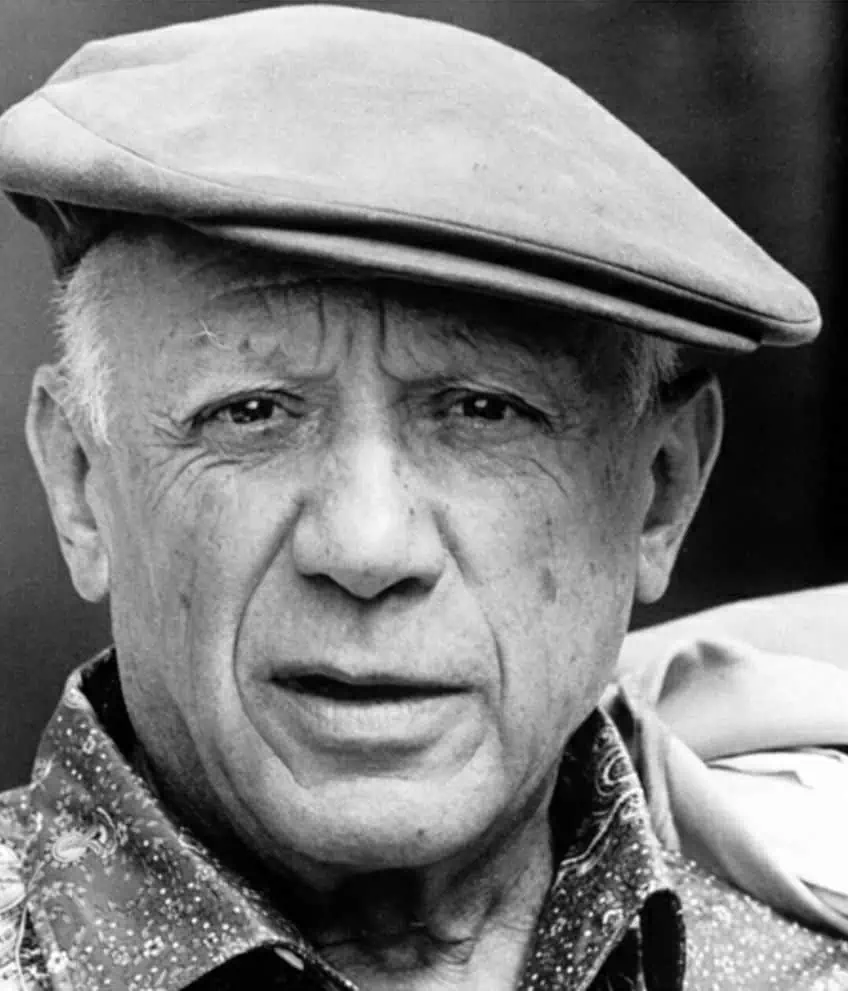“Portrait of Dora Maar” by Pablo Picasso – An Analysis
The Portrait of Dora Maar by Pablo Picasso is one of the most iconic and enigmatic portraits in the history of art. Completed in 1937, this painting captured the enigmatic French photographer, Dora Maar, who was also Picasso’s lover and muse during the 1930s. A Dora Maar painting analysis will give us insight into the many layers of meaning and symbolism embedded within it. Beyond its artistic and historical significance, the question ”how much is the Portrait of Dora Maar worth?” is also one that continues to intrigue collectors and art investors around the world.
Contents
Portrait of Dora Maar by Pablo Picasso
Portrait of Dora Maar, painted by Pablo Picasso in 1937, is a revolutionary work of art that challenged traditional notions of portraiture and representation. The painting is a cubist portrait of Dora Maar, a surrealist photographer and artist who was also Picasso’s lover and muse at the time. Let us contextualize this painting within the socio-political moment in France and Spain, as well as within Picasso’s career.
| Date | 1937 |
| Medium | Oil on canvas |
| Dimensions (cm) | 92 × 65 |
| Style | Cubism |
| Type | Portraiture |
| Subject | Dora Maar |
| Location | Musée Picasso, Paris, France |
Socio-Political Context of Portrait of Dora Maar by Pablo Picasso
Portrait of Dora Maar was created within a tumultuous socio-political climate in both France and Spain. The painting was completed during the Spanish Civil War, a conflict between the nationalist forces led by General Francisco Franco (1892-1975)and the democratically-elected government of the Second Spanish Republic. The war had a profound impact on both Picasso and Dora Maar, who were both staunch supporters of the Republican cause. In France, the country was on the brink of World War II, and tensions were high between the government and the growing fascist movement.
Picasso, who had spent most of his adult life in France, was a vocal opponent of fascism and used his art as a means of political protest.
In Portrait of Dora Maar, Picasso used his cubist style to create a fragmented, distorted image of his subject, which many art historians have interpreted as a reflection of the violence and chaos of the time. Dora Maar, the subject of the painting, was a surrealist photographer and artist who was also an active participant in left-wing political circles. She was deeply involved in the intellectual and artistic movements of the time, and her relationship with Picasso was defined by their shared political beliefs. In Portrait of Dora Maar, Picasso captures the complexity and intensity of his lover and muse, creating a portrait that is both personal and political in nature.
Portrait of Dora Maar by Pablo Picasso Within the Context of His Career
Portrait of Dora Maar is a landmark work in the career of Pablo Picasso, one of the most important artists of the 20th century. The painting was completed in 1937, at a time when Picasso was at the height of his creative powers, and it marked a significant departure from his earlier work. At the time of its creation, Picasso was already a well-established figure in the art world, having already made significant contributions to the development of modern art. He was a pioneer of the cubist movement, which had revolutionized the way artists approached representation and form.

In Portrait of Dora Maar, Picasso used his cubist style to create a fragmented, multi-dimensional portrait of his lover and muse. The painting also marked a significant shift in Picasso’s personal life. Dora Maar, the subject of the portrait, was a prominent figure in the Parisian art world, and her relationship with Picasso was intense and tumultuous. The portrait captures the complexity of their relationship, as well as Dora’s intellectual and artistic contributions to Picasso’s work.
The Reception of Portrait of Dora Maar
The first exhibition of Pablo Picasso’s Portrait of Dora Maar took place at the Galerie des Beaux-Arts in Paris in 1937. The painting was part of a larger exhibition of Picasso’s work, and it quickly became one of the most talked-about pieces in the show. The reception of the painting was mixed, with some viewers and critics praising its bold, innovative style, while others found it shocking and disturbing. The distorted, multi-dimensional forms of the painting challenged traditional notions of beauty and representation, and many viewers struggled to make sense of the work. Despite its divisive reception, the Portrait of Dora Maar quickly became one of the most famous works in Picasso’s oeuvre.
Critics praised the painting’s emotional intensity and powerful expression of the human form, while others noted its political and social significance in the context of the Spanish Civil War.
Art critics at the time recognized the significance of the work. Writing for the New York Times, Edward Alden Jewell (1888-1947) described the painting as “a most remarkable study in portraiture,” noting its “dramatic intensity” and “extraordinary sense of motion.” Other critics noted the painting’s political significance, with Time magazine calling it “an indictment of fascism and all forms of oppression.” The public reaction to the painting was similarly mixed. Some viewers were captivated by its raw emotional power, while others found it disturbing and difficult to understand. Nevertheless, the painting quickly became an iconic image of modern art, cementing Picasso’s reputation as one of the most important artists of the 20th century.
Dora Maar Painting Analysis
Portrait of Dora Maar by Pablo Picasso is a cubist portrait that depicts his lover and muse Dora Maar in a multi-dimensional, fragmented style. Let us look more closely at the technical elements of this artwork such as, composition, perspective, color, light, and more.
Composition
The composition is centered on the figure of Dora, who sits in a chair with her arms resting on the armrest. The chair is depicted at an angle, with one leg tilted up towards the viewer. The background is a dark, muted blue, with abstract shapes and lines that seem to echo the curves of Dora’s body.
Subject Matter
The subject matter of the painting is the figure of Dora Maar, a central figure in the Parisian art world and a powerful influence on Picasso’s work. Her face is depicted in a fragmented style, with multiple perspectives and angles that create a sense of movement and dynamism.
Her eyes are dark and intense, with long lashes that seem to almost touch the surface of the canvas.
Color and Light
The color and light in the painting are muted and subdued, with a range of blues and grays dominating the composition. The light source appears to come from the upper left-hand corner, casting a subtle shadow across Dora’s face and adding to the sense of depth and dimensionality in the painting.
Texture
The texture of the painting is rough and textured, with visible brushstrokes and areas of impasto that create a sense of movement and energy. The lines and shapes in the composition are jagged and angular, emphasizing the fractured, fragmented style of cubism.
Perspective
The perspective in the painting is highly dynamic, with multiple perspectives and angles that create a sense of movement and dynamism. The form of Dora’s body is depicted in a highly stylized, abstract manner, emphasizing the tension and drama of the composition.
Symbolism
The symbolism in Portrait of Dora Maar is complex and multi-layered, reflecting the personal and political context of the painting. Dora’s fragmented, multi-dimensional form can be interpreted as a reflection of the violence and chaos of the Spanish Civil War.
This war was raging at the time of the painting’s creation.
Comparative Study: Le Rêve (The Dream) and Portrait of Dora Maar
Le Rêve (The Dream) and Portrait of Dora Maar are two of the most famous paintings by Pablo Picasso, but they are vastly different in terms of composition, subject matter, and style. Le Rêve, completed in 1932, is a sensual and dreamlike depiction of a reclining woman, while Portrait of Dora Maar, completed in 1937, is a distorted and fragmented portrait of Picasso’s lover and muse. In terms of composition, Le Rêve is a classic example of Picasso’s unique style of Cubism, which breaks down objects and figures into geometric shapes and abstract forms. The painting depicts a reclining woman with her eyes closed, her head tilted back, and her arms stretched out above her head.
 Graffiti of Pablo Picasso with the caption “Creativity” in Málaga, Spain (2020); Daniel Capilla, CC BY-SA 4.0, via Wikimedia Commons
Graffiti of Pablo Picasso with the caption “Creativity” in Málaga, Spain (2020); Daniel Capilla, CC BY-SA 4.0, via Wikimedia Commons
The woman’s body is rendered in soft, curving lines and flowing contours, while her face is a mask-like abstraction of geometric shapes and bold colors. The background is a patchwork of colorful, abstract shapes that suggest a dreamlike, surreal atmosphere. Portrait of Dora Maar, on the other hand, is a more traditional portrait painting, although it is still a prime example of Picasso’s cubist style. The painting depicts Dora Maar in a distorted and fragmented way, with her face and features broken up into abstract planes and shapes. The background is a flat, monochromatic color that emphasizes the disjointed and fragmented nature of the portrait. Unlike Le Rêve, which is a sensual and dreamlike depiction of a reclining woman, Portrait of Dora Maar is a fragmented and distorted representation of a real-life person.
Artist Abstract: Who Was Pablo Picasso?
Pablo Picasso is widely regarded as one of the most influential artists of the 20th century. Born in Malaga, Spain in 1881, Picasso showed an early talent for art and began receiving formal training at a young age. His father was an artist and art teacher, and Picasso grew up surrounded by creativity and artistic expression. He quickly developed his skills as a painter and began to experiment with different styles and techniques. In his early years, Picasso was heavily influenced by the works of the old masters, particularly Francisco de Goya (1746 – 1828) and Diego Velázquez (1599 – 1660). His first major work, The First Communion (1896), was completed when he was just 15 years old and demonstrated his skill in creating realistic, lifelike portraits. However, Picasso quickly grew restless with traditional styles of painting and began to experiment with new forms and ideas.

Throughout his career, Picasso achieved numerous milestones that solidified his place in art history. Perhaps his most famous painting, Les Demoiselles d’Avignon (1907) marked the beginning of the Cubist movement. This painting, with its distorted figures and geometric shapes, challenged the traditional notions of perspective and representation in art. Picasso’s other notable works include Guernica (1937), a powerful anti-war painting, which has become a symbol of peace and freedom, and The Old Guitarist (1903 – 1904), a melancholic depiction of an aging musician that showcases Picasso’s ability to convey emotion through art. In addition to his contributions to the art world, Picasso’s influence can be felt across numerous fields, from literature to film.
Overall, Portrait of Dora Maar remains a groundbreaking work of art that continues to inspire and captivate viewers today. Its revolutionary style and political context challenged traditional notions of portraiture and representation, and helped to establish Picasso as one of the greatest artists of the 20th century.
Frequently Asked Questions
Who Was Pablo Picasso?
Overall, Picasso’s legacy as an artist and innovator cannot be overstated. His early training and experimentation with different styles paved the way for his groundbreaking contributions to the art world, and his willingness to challenge traditional notions of representation and perspective helped to shape the course of art history. Today, his works continue to captivate and inspire viewers around the world, cementing his place as one of the greatest artists of all time.
How Much Is the Portrait of Dora Maar Worth?
Portrait of Dora Maar by Pablo Picasso is considered one of his most famous and important works, and as such, it is likely to have a significant market value. The painting has been the subject of several high-profile sales and auctions over the years, with prices ranging from tens of millions to over a hundred million dollars. Ultimately, the actual value of the Portrait of Dora Maar would depend on various factors, such as its condition, provenance, and the state of the art market at the time of sale.
What Makes the Portrait of Dora Maar a Revolutionary Painting?
What makes Portrait of Dora Maar so revolutionary is the way in which Picasso depicts his subject. Rather than creating a straightforward, realistic portrait, Picasso distorts and dissects the image of Dora, breaking her down into fragmented shapes and angles. The result is a complex, multi-dimensional portrait that captures the essence of Dora’s personality and spirit. At the time of its creation, Portrait of Dora Maar was seen as a radical departure from traditional portraiture. Picasso’s use of cubist techniques, such as multiple perspectives and overlapping planes, challenged the idea that a portrait should accurately represent the physical appearance of the subject. Instead, Picasso sought to capture the essence of Dora’s personality and emotions through the use of unconventional forms and abstract shapes.
Nicolene Burger, a South African multimedia artist and creative consultant, specializes in oil painting and performance art. She earned her BA in Visual Arts from Stellenbosch University in 2017. Nicolene’s artistic journey includes exhibitions in South Korea, participation in the 2019 ICA Live Art Workshop, and solo exhibitions. She is currently pursuing a practice-based master’s degree in theater and performance. Nicolene focuses on fostering sustainable creative practices and offers coaching sessions for fellow artists, emphasizing the profound communicative power of art for healing and connection. Nicolene writes blog posts on art history for artfilemagazine with a focus on famous artists and contemporary art.
Learn more about Nicolene Burger and about us.
Cite this Article
Nicolene, Burger, ““Portrait of Dora Maar” by Pablo Picasso – An Analysis.” artfilemagazine – Your Online Art Source. August 23, 2023. URL: https://artfilemagazine.com/portrait-of-dora-maar-by-pablo-picasso/
Burger, N. (2023, 23 August). “Portrait of Dora Maar” by Pablo Picasso – An Analysis. artfilemagazine – Your Online Art Source. https://artfilemagazine.com/portrait-of-dora-maar-by-pablo-picasso/
Burger, Nicolene. ““Portrait of Dora Maar” by Pablo Picasso – An Analysis.” artfilemagazine – Your Online Art Source, August 23, 2023. https://artfilemagazine.com/portrait-of-dora-maar-by-pablo-picasso/.


